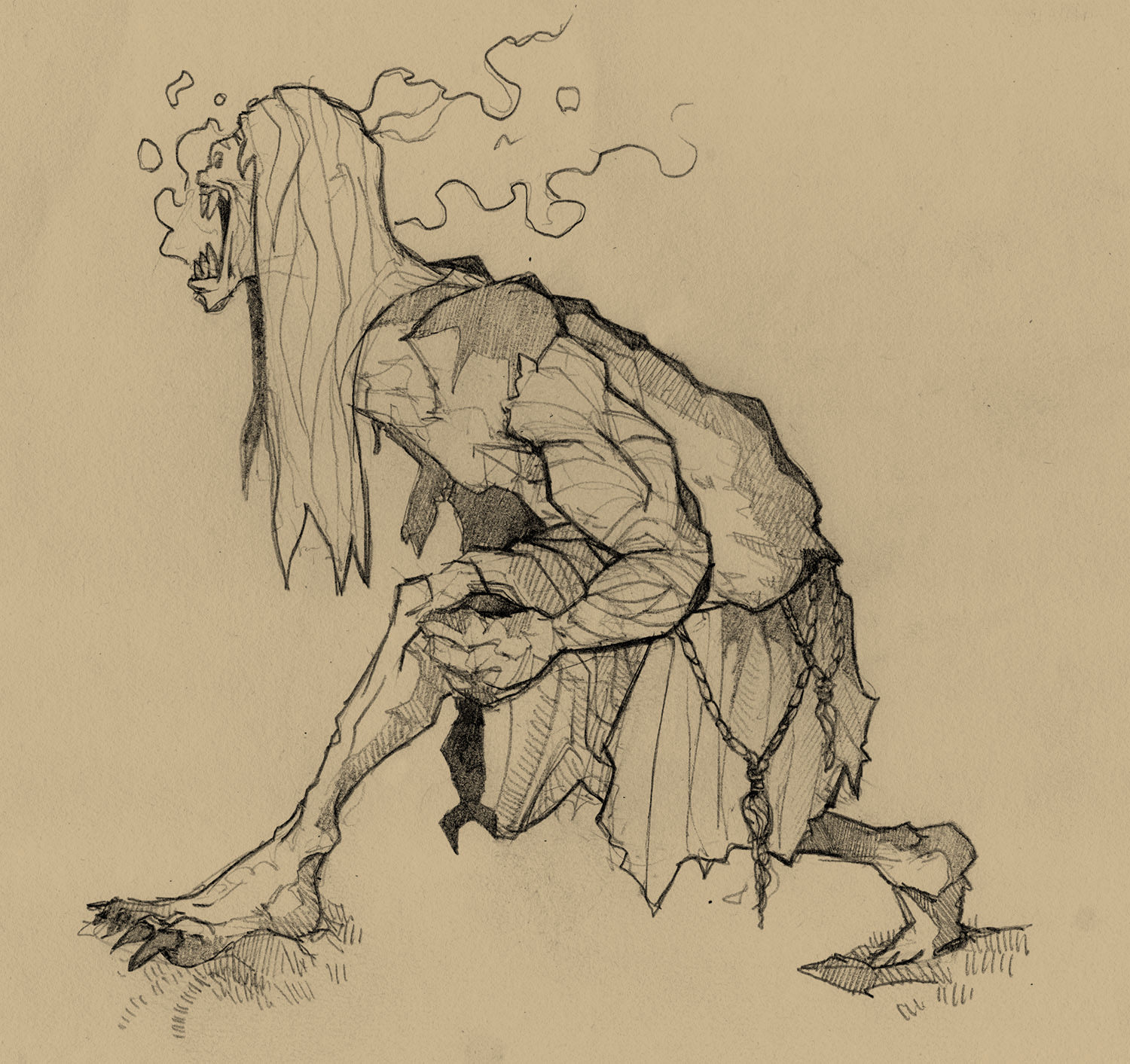Cursed combination of vampire, witch, and werewolf.
Striga Lore

The Striga hunts across many different regions and in many different forms. The legends vary from place to place, and it is difficult to decipher facts from flights of fancy. In some regions it could be interpreted as an accusation of witchcraft, and so one might even shout "striga!" as a sort of curse word. Before examining the stories, let us examine the different roots and meanings of this monster's name. In doing so we might better understand the true essence of this creature and be better prepared to face one regardless of the physical form it appears in.
The strigoi in Romanian mythology are troubled spirits that have risen from the grave. The infamous vampire Dracula is an incarnation of the Romanian strigoi.
The stryge in French mythology is a bird-woman who sucks the blood of children.
In Greek, a strix is a shape-shifted bird of ill omen that fed on the blood of humans. Strix could also refer to witchcraft.
The shtriga in Albanian mythology is a vampiric witch that sucks the blood of infants and can transform into a flying insect.
The strzyga of Slavic mythology is a vampiric, female demon that can transform into an owl to hunt humans at night.
In Italian, the word strega means witch.
In considering these examples, we can extract certain properties of strigoi that are most likely the truth. A striga is an undead being. Almost every story mentions the beast rising from the grave and it is well known that undead creatures crave the warm blood of the living. Their diet of living humans marks them clearly as a kind of vampire. Despite the occasional reference to a male creature, it is likely that most striga are females. There is a clear connection to witchcraft which is historically associated with females. We can also see that strigoi have the ability to change shapes and will often take the form of a flying creature (traditionally a bat, owl, moth, fly, or bee) to hunt its prey.
The last thing to consider is that the presence of a curse is likely at work. A powerful curse would explain how a striga rises from the grave and why it is bound to hunt only at night. In some stories, the striga is said to only hunt during a full moon. This draws a connection to the more well-known lycanthropy curse.
There was once a king whose kingdom was threatened by a striga. The king sought out a reknowned monster hunter to help lift the curse. The hunter took the contract but sensed something strange was going on. In his experience, no one ever sought to save a striga. A human who had once been a striga may not retain all of their mental faculties, and would forever be at risk of turning back into a savage beast. Far better to simply kill them…
In order to lift the curse, the hunter had to wait until the striga left its burial site to hunt and then prevent it from returning to its resting place by the third crowing of the rooster. The striga was a disgusting, well-muscled beast that ran on all fours. Its jaws extended from ear to ear, with two rows of teeth inside. Her hands ended in long fingers with claws that could tear through solid bone. The only remaining human feature was the red hair that trailed down her back. The beast was brimming with hatred for all things living, and she had super strength and speed. The hunter could barely stand up against it and only managed to prevail through the super-human power he was granted by a curse of his own. In the end, he restored the girl to her human form and learned the truth: She was the king's daughter born of an incestous relationship with his sister. The curse had been placed by another man at court who was also in love with the king's sister. He could not bear to see his lover taken from him, especially by her own brother, and so he cursed them. The king's sister died in childbirth, and the infant transformed into a striga and grew inside their sarcophagus for years before emerging to terrorize the kingdom. Evidence of the curse was found inside the culprit's journal:
“I curse you and hope you rot amidst worms in hell. I curse your incestuous deeds. Your sister deserved better. I implore destiny to render the child born of your lechery as monstrous as you. If the witch spoke truly, you will soon taste my vengeance. I need only prepare the ingredients and utter the words thrice. Some say that not even the words are necessary, that hatred alone suffices. Know that my hatred is fierce.”
Written by Giles Ravensong.
